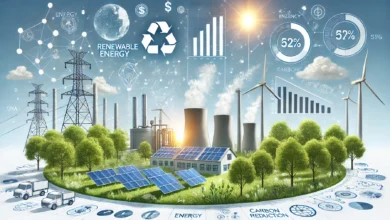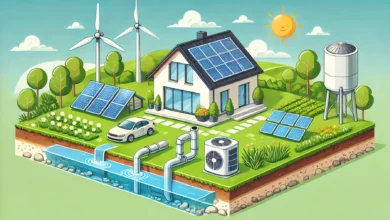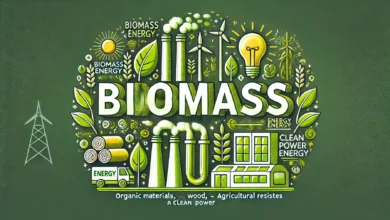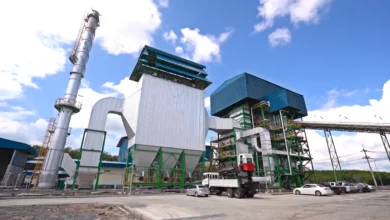How Is Electricity Generated with Biomass Energy
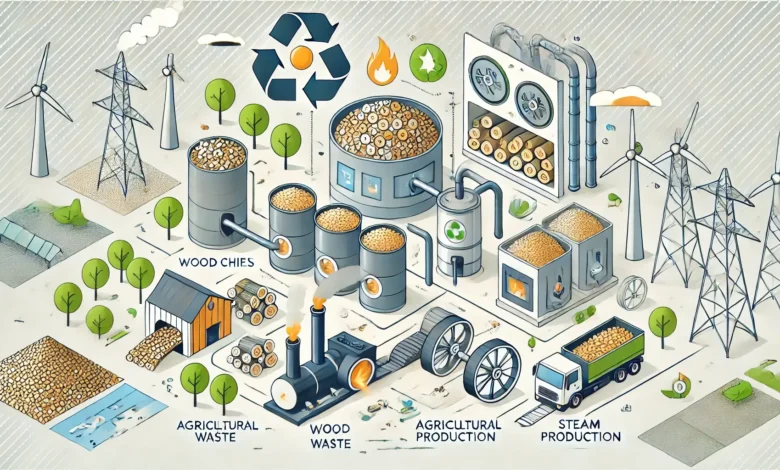
Biomass energy is derived from organic materials, such as plants, agricultural waste, and wood. It is a renewable energy source that utilizes energy and biomass to produce heat and electricity. Biomass can be burned directly or converted into biofuels to power biomass systems designed for sustainable energy production.
Contents
- 1 How Is Electricity Generated with Biomass Energy?
- 2 Is Biomass Energy Renewable?
- 3 Examples of Biomass Energy Sources
- 4 Advantages of Biomass Energy
- 5 Challenges and Limitations of Biomass Energy
- 6 Biomass Energy Production in the United States
- 7 How to Make a Biomass Electricity Generator?
- 8 The Future of Biomass Energy
- 9 The Role of Biomass Energy in Sustainable Power Generation
How Is Electricity Generated with Biomass Energy?
The process of producing electricity from biomass to power involves several steps:
- Collection of Biomass: Organic materials like wood chips, crop residues, and animal waste are collected as raw materials. These are examples of bio energies used for electricity generation.
- Processing and Preparation: The biomass is processed into smaller, manageable pieces or compressed into pellets direct for easier handling and combustion.
- Combustion or Gasification: Biomass is burned directly in a biomass system to produce heat, or it undergoes gasification to convert it into a gas called syngas.
- Steam Production: The heat generated boils water to create steam, which powers a turbine connected to a generator, producing electricity production US standards.
- Energy Distribution: The generated electricity is distributed through the grid to power homes, industries, and businesses.
Is Biomass Energy Renewable?
One of the frequently asked questions is, “Is biomass energy renewable?” The answer is yes. Biomass sources are naturally replenished through plant growth, making them a sustainable option. However, sustainable management practices are necessary to maintain this balance and minimize the environmental impact.
Examples of Biomass Energy Sources
| Biomass Source | Application |
|---|---|
| Wood and Wood Residues | Fuel for heating and electricity generation. |
| Agricultural Waste | Utilized for biogas and compost production. |
| Food Waste | Converted into biogas through anaerobic digestion. |
| Animal Manure | Used to produce methane gas for power. |
| Energy Crops (e.g., Miscanthus) | Grown specifically for energy production. |
These examples showcase the diversity and versatility of energy and biomass for sustainable electricity production.
Advantages of Biomass Energy
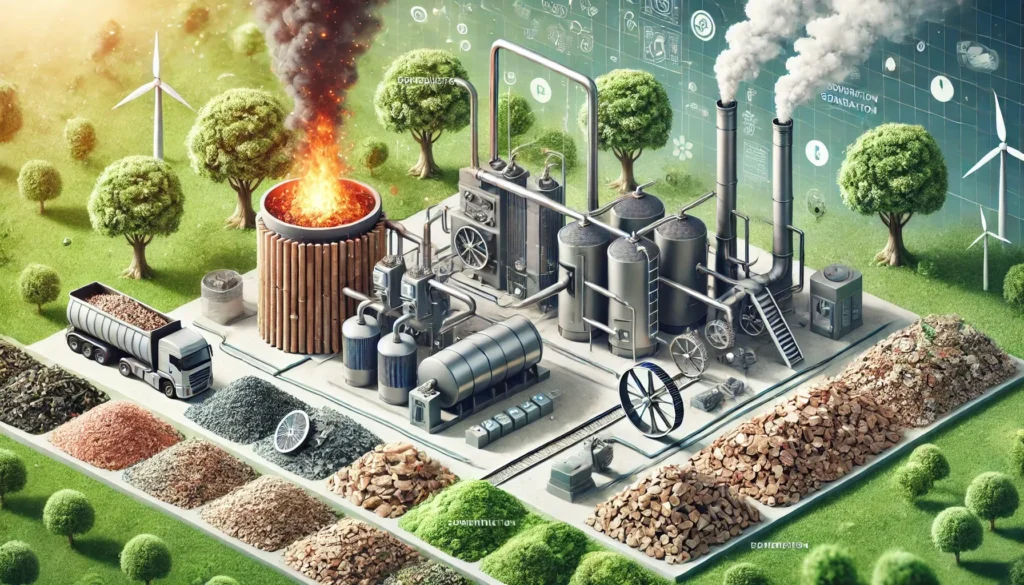
1. Renewable and Sustainable
Biomass energy is inherently renewable as long as organic materials are replenished. It reduces reliance on fossil fuels, addressing environmental concerns.
2. Carbon Neutral Potential
Plants absorb carbon dioxide during growth, balancing the emissions released during combustion. This feature makes bio energies environmentally friendly.
3. Waste Reduction
Biomass utilizes agricultural and industrial waste, reducing landfill use and promoting recycling.
4. Job Creation and Economic Growth
The biomass energy production industry supports local economies by creating jobs in agriculture, collection, and processing sectors.
Challenges and Limitations of Biomass Energy
Despite its benefits, biomass systems face some challenges:
- Land Use Requirements: Growing crops for biomass may compete with food production.
- Emissions: While lower than fossil fuels, emissions can still contribute to air pollution.
- Efficiency Concerns: Converting biomass into electricity can have lower efficiency compared to other renewables like wind or solar.
Biomass Energy Production in the United States
The power generation United States relies on diverse renewable sources, including biomass. In the U.S., electricity production US from biomass contributes about 1.4% of total electricity generation, supporting rural economies and reducing greenhouse gas emissions.
Regional Distribution Table:
| State | Electricity Generation (MW) | Primary Biomass Source |
| California | 600 | Agricultural Waste |
| Florida | 550 | Forest Residues |
| Georgia | 450 | Wood Chips and Pellets |
| Oregon | 300 | Mill Waste and Sawdust |
| Texas | 250 | Animal Waste |
This data highlights the importance of biomass to power initiatives in achieving sustainability goals.
How to Make a Biomass Electricity Generator?
For those interested in how to make a electricity generator using biomass, the process includes:
- Material Collection: Gather biomass materials like wood, agricultural residues, or pellets.
- Combustion Chamber Setup: Install a chamber for burning biomass to create heat.
- Steam Turbine Installation: Connect a turbine to convert steam pressure into mechanical energy.
- Generator Connection: Attach a generator to convert mechanical energy into electrical energy.
DIY generators can be experimental, while commercial solutions offer scalable options for consistent energy production.
The Future of Biomass Energy
The growth of biomass energy production continues to accelerate with advancements in technology and government incentives. Future innovations focus on increasing efficiency, reducing emissions, and improving integration with other renewable sources.
The Role of Biomass Energy in Sustainable Power Generation
How is electricity generated with biomass energy? Through innovative processes like combustion, gasification, and anaerobic digestion, biomass systems provide a sustainable alternative to fossil fuels. As bio energies continue to develop, they offer practical solutions for renewable energy needs, particularly in electricity production US markets.
With its advantages, scalability, and renewable potential, biomass energy stands out as a key player in the future of sustainable energy. Whether exploring pellets direct or larger biomass systems, it’s clear that biomass holds promise for greener power generation.
